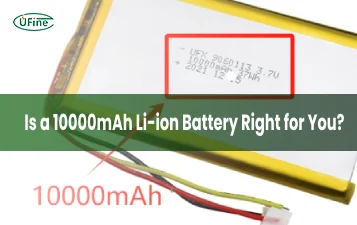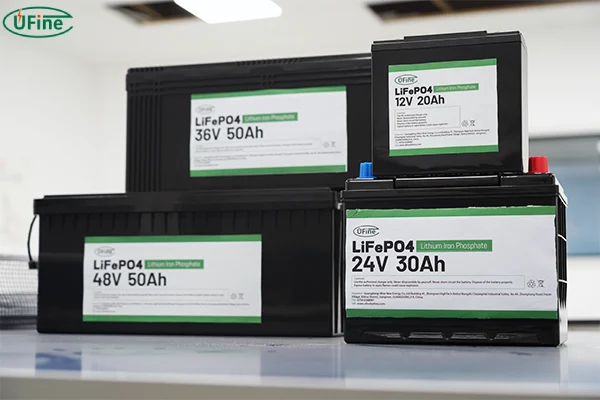Marine adventures demand reliable power, and that’s where marine deep cycle battery shine. Unlike standard car batteries designed for quick bursts of power, deep cycle batteries are built to handle sustained, deep discharges, powering everything from your boat’s engine to essential onboard systems. Choosing the right marine deep cycle battery is crucial for ensuring a smooth and enjoyable boating experience. This guide will delve into the intricacies of these batteries, helping you make an informed decision.
Part 1. Understanding marine deep cycle battery

Marine deep cycle battery are specifically engineered to deliver consistent power for extended periods. They are designed to withstand repeated deep discharges (discharging to a significantly lower level than a standard battery) without compromising their performance or lifespan. This makes them ideal for marine applications where you need reliable power for:
- Starting Engines: Deep cycle batteries provide the initial boost to start your boat’s engine, even after prolonged periods of inactivity.
- Running Electronics: From navigation systems and radios to fish finders and lighting, deep cycle batteries power your onboard electronics.
- Auxiliary Systems: These batteries can power auxiliary systems like bilge pumps, livewells, refrigerators, and other essential equipment.
Part 2. Types of marine deep cycle battery
Choosing the right type of marine deep cycle battery depends on your specific needs and priorities. Let’s explore the two primary categories:
1. Lead-Acid Batteries:
- Flooded Lead-Acid: These are the most common and affordable type. They are known for their reliability and are suitable for various marine applications.
- Pros: Relatively inexpensive, readily available, and well-understood technology.
- Cons: Heavy, require regular maintenance (adding water), shorter lifespan compared to other types, and susceptible to sulfation (build-up of lead sulfate crystals) if not properly maintained.
- AGM (Absorbent Glass Mat): AGM batteries use a fiberglass mat to absorb the electrolyte, eliminating the need for regular water additions. They are more robust and vibration-resistant than flooded lead-acid batteries.
- Pros: Sealed, low maintenance, better vibration resistance, and faster charging than flooded lead-acid batteries.
- Cons: More expensive than flooded lead-acid batteries, lower capacity for the same size, and can be damaged by overcharging.
- Gel: Gel batteries use a gelled electrolyte, offering superior vibration resistance and spill-proof operation. They are often preferred for demanding applications.
- Pros: Sealed, low maintenance, excellent vibration resistance, and can withstand extreme temperatures.
- Cons: More expensive than AGM and flooded lead-acid batteries, lower capacity for the same size, and slower charging time.
2. Lithium-Ion Batteries:
- LiFePO4 (Lithium Iron Phosphate): LiFePO4 batteries are becoming increasingly popular in marine applications due to their superior performance and longevity. They offer high energy density, fast charging, and excellent cycle life.
- Pros: Lightweight, long lifespan, high discharge rate, fast charging, and excellent temperature tolerance.
- Cons: More expensive than lead-acid batteries, require a specific charger designed for lithium-ion batteries, and may be more sensitive to extreme temperatures.
AGM VS Lithium VS Lead-Acid Battery: Comprehensive Comparison
Part 3. Key parameters for choosing the right marine deep cycle battery
Choosing the right marine deep cycle battery involves considering several crucial factors:
1. Capacity (Amp-Hours, Ah): This indicates the amount of energy the battery can store. Higher Ah ratings mean longer run times. Consider the power demands of your boat’s systems to determine the required capacity.
2. Discharge Rate (C Rate): This measures how quickly the battery can deliver power. A higher C rate indicates a faster discharge, suitable for high-demand applications. For example, a battery with a 1C rate can fully discharge in one hour.
3. Cycle Life: This refers to the number of charge-discharge cycles a battery can endure before its capacity significantly degrades. A higher cycle life indicates a longer-lasting battery.
4. Internal Resistance: Lower internal resistance means more efficient energy delivery and less heat generation. A battery with lower internal resistance can deliver more power without overheating.
5. Operating Temperature Range: This is the temperature range within which the battery can safely operate. Choose a battery that can withstand the temperatures your boat will experience.
6. Safety Features: Look for batteries with safety features like overcharge protection, over-discharge protection, and short circuit protection. These features help prevent damage and ensure safe operation.
7. Dimensions and Weight: Consider the available space on your boat and the weight limitations. Choose a battery that fits comfortably and doesn’t strain your boat’s structure.
8. Warranty: A good warranty provides peace of mind and protects your investment. Check the warranty terms and conditions before purchasing.
Part 4. How long does a marine deep cycle battery last?
The lifespan of a marine deep cycle battery depends on several factors:
- Battery Type: Lithium-ion batteries generally have a longer lifespan than lead-acid batteries.
- Depth of Discharge (DOD): Frequent deep discharges shorten the battery’s life. Minimize deep discharges whenever possible.
- Charging Habits: Using a proper charger designed for your battery type and avoiding overcharging are essential for longevity.
- Operating Temperature: Extreme temperatures can accelerate battery degradation. Store and operate the battery within its recommended temperature range.
Part 5. Charging and maintaining
Proper charging and maintenance are crucial for maximizing the lifespan of your marine deep cycle battery. Here’s a guide:
- Use a Dedicated Charger: Always use a charger specifically designed for your battery type. Using the wrong charger can damage the battery.
- Avoid Overcharging: Overcharging can lead to battery damage and reduced capacity.
- Regularly Check Battery Charge: Monitor the battery charge level and recharge it when necessary.
- Keep the Battery Clean: Clean the battery terminals regularly to prevent corrosion and ensure good electrical connections.
- Store Properly: Store the battery in a cool, dry, and well-ventilated area, away from extreme temperatures and moisture.
Part 6. Top brands
Several reputable brands offer high-quality marine deep cycle battery:
- Trojan: Trojan is a leading manufacturer known for its durable and reliable flooded lead-acid batteries.
- Deka: Deka offers a wide range of lead-acid batteries, including flooded, AGM, and gel types.
- Exide: Exide is another well-respected brand known for its high-performance lead-acid batteries.
- Optima: Optima specializes in high-performance spiral-cell batteries, offering excellent vibration resistance and durability.
- Northstar: Northstar is a leading manufacturer of AGM and gel batteries, known for their reliability and performance.
- LiFePO4 Batteries: Several manufacturers specialize in LiFePO4 batteries, including Battle Born Batteries, Victron Energy, and Renogy.
Part 7. Deep marine deep cycle battery manufacturers
Ufine Battery is a Chinese lithium battery manufacturer that can customize lithium-ion batteries, lithium polymer batteries, 18650 batteries, LiFePO4 batteries, high temperature batteries, low temperature batteries, etc. in different sizes, capacities, and voltages according to demand.
Part 8. Conclusion
Choosing the right marine deep cycle battery is a crucial decision for any boater. By understanding the different types, key parameters, charging requirements, and reputable brands, you can make an informed choice that ensures reliable power for your marine adventures.
Related Tags:
More Articles

10000mAh Battery Explained: How Long It Lasts, How It Works
A full guide on 10000mAh li-ion batteries, voltage, usage time, and tips. Discover how a 10000mAh battery works, how long it lasts, and how to choose.
10440 Battery Guide: Size, Voltage, Capacity, Uses & More
Understand 10440 batteries better—size, voltage, safety, and how they compare to AAA. Find the best fit for your high-performance devices.
White Stuff on Battery Terminals: A Step-by-Step Cleaning and Maintenance Guide
White stuff on battery terminals is corrosion. Learn how to clean it safely, prevent damage, and keep your battery running strong with simple steps.
Understanding How Glass Mat Batteries Work: Technology, Benefits, and Limitations
Glass mat batteries power cars, RVs, and solar systems. Learn how they work, their benefits, and what to consider before choosing one.
A Buyer’s Guide for AA Size Lithium Battery
Discover the power of AA size lithium batteries—types, voltage, capacity, and more! Learn how to choose the best one for your needs. Read now!




